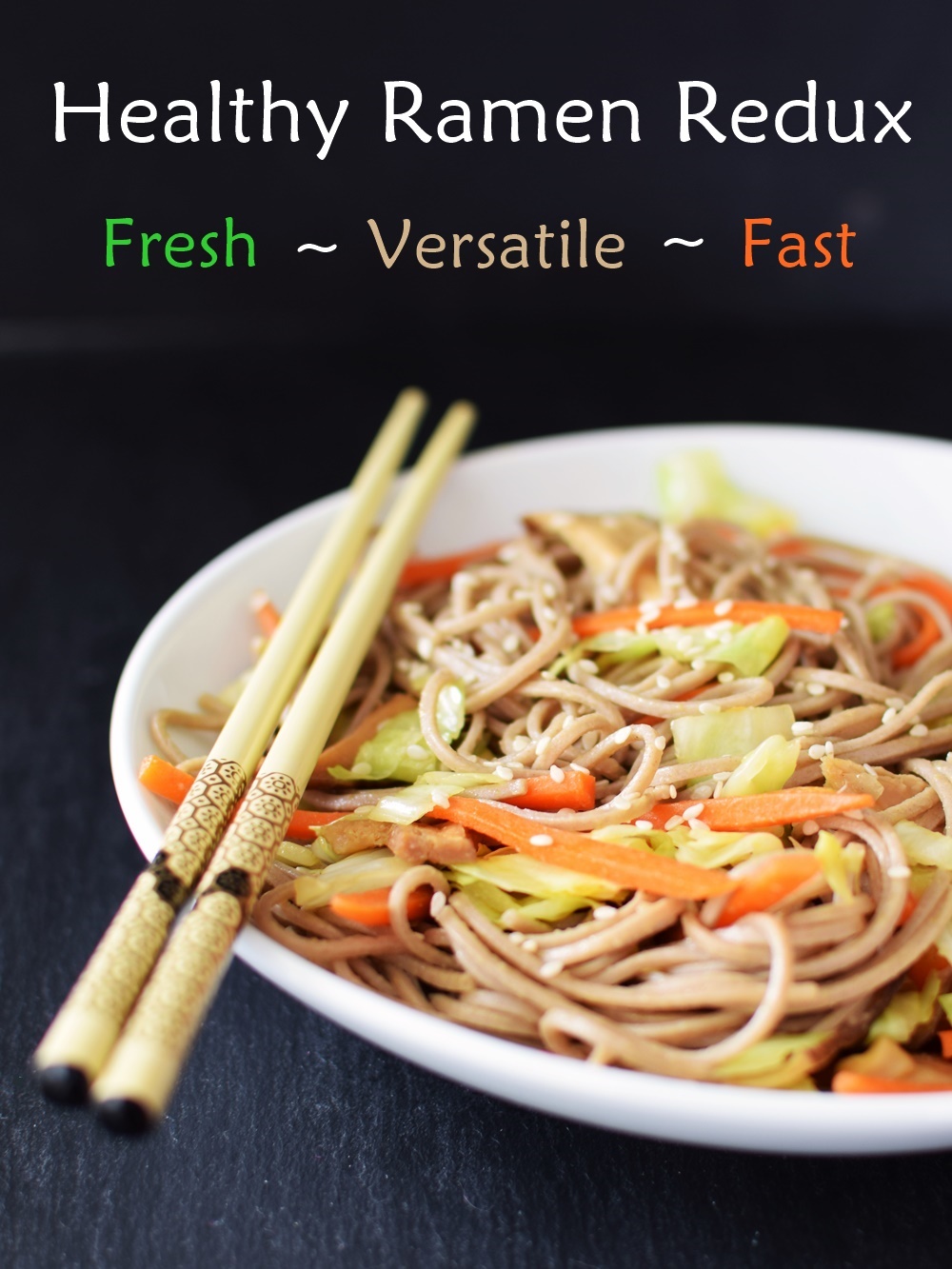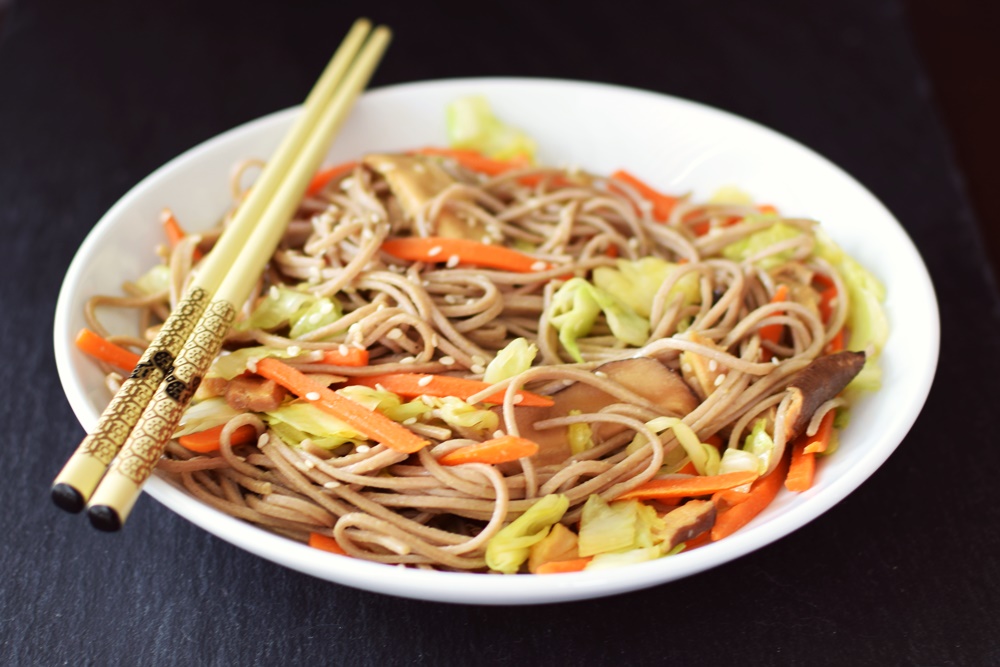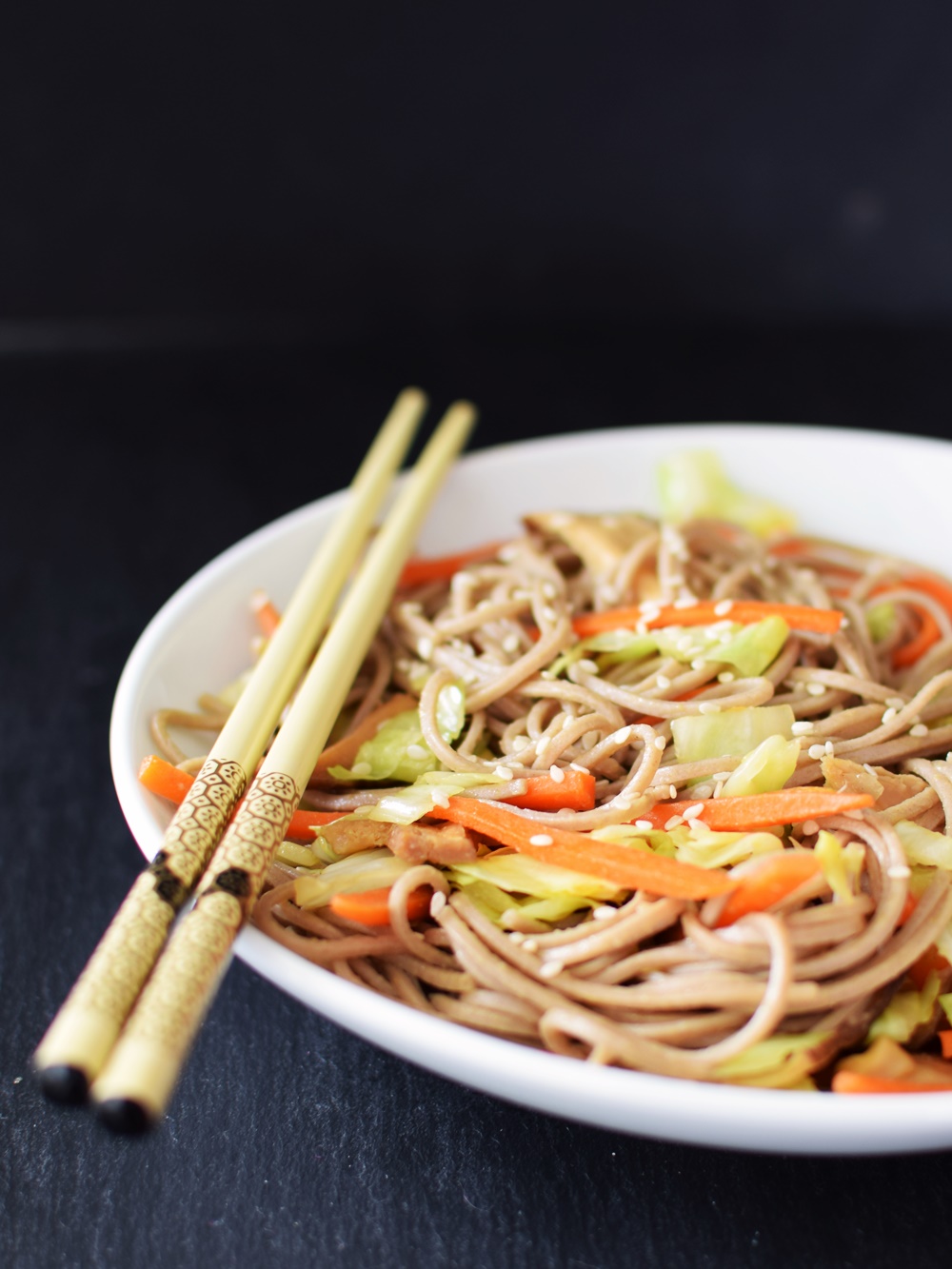I realize that many Top Ramen flavors are actually dairy-free – it was probably the first food I ever learned to cook as a child. But those processed packets are far from nutritious. And while my healthy ramen redux isn’t a full mock of those super-cheap instant lunches, the use of onion powder (not fresh onions!) gives it that nostalgic appeal which I sometimes long for.

I opted for a sesame vibe, because a) I like sesame – it just shouts “amazing Asian food!” – and b) I just received a beautiful bottle of sesame seeds from Simply Organic. I’m gong to be partnering with them in the future (for my upcoming books!), and am elated since I’ve been using (and loving) their spices for years!
I’ve made this healthy ramen many times before with udon noodles, but the one shown is with Muso Soba Noodles that I received as a gift from Gold Mine Natural Foods. They offer both wheat-buckwheat soba and gluten-free 100% buckwheat soba noodles. And as you can see, this healthy ramen is more of a “dry” noodle dish, which is how I like it. I add just 1 cup of broth to the whole recipe to add moisture for “dipping” the noodles without making it overly soupy.

Special Diet Notes: Healthy Ramen with Sesame
By ingredients, this recipe is dairy-free / non-dairy, egg-free, nut-free, peanut-free, vegan / plant-based, and vegetarian.
For gluten-free healthy ramen, look for 100% buckwheat soba noodles or use your gluten-free noodle-y pasta of choice.
For soy-free healthy ramen, you can use coconut aminos in place of the soy sauce. Note that the flavor may be a touch different, so you may want to adjust the other seasonings, to taste.
Higher Protein Option: For a heftier meal, I think this dish goes nicely with cubed tempeh or cooked chicken. Simply saute about 8 ounces with the mushrooms.
Superfast Tips: For a meal that is ready as soon as the noodles are done, you can cheat and purchase pre-packaged coleslaw mix for the vegetables, pre-sliced mushrooms, and jarred crushed or mince garlic (1/2 to 1 teaspoon). You can also skip the garlic (we often do) or use 1/8 to 1/4 teaspoon garlic powder instead, added with the onion powder.
- 8 ounces dried soba or udon noodle (see notes in post above for gluten-free options)
- 3 tablespoons sesame oil, divided
- 3 small carrots, julienned or peeled into large shreds
- 2 to 3 cups shredded cabbage
- 2 to 3 garlic cloves, minced or crushed
- 1 ounce dried mushrooms, rehydrated (I use a blend of porcini, shiitake and oyster), or 8 ounces mushrooms, thickly sliced
- 1 ½ tablespoons soy sauce or wheat-free tamari, divided
- 1 teaspoon onion powder
- Salt, to taste
- 1 cup chicken or no-chicken vegan broth (optional or use more!)
- Freshly ground black pepper or a few pinches crushed red pepper
- Raw or toasted sesame seeds, for garnish
- Cook the noodles according to the package directions.
- While the pasta is boiling, heat 2 tablespoons of the sesame oil over medium-low heat (I do a lower heat to protect the flavor of the oil, but you can up it to medium if you are really hungry). Add the carrots and cabbage and saute for a few minutes. Add the garlic and mushrooms and saute just until the mushrooms begin to soften, about 3 to 5 minutes (or just 1 minute if using rehydrated mushrooms).
- Turn off the heat, and stir in the noodles, soy sauce, remaining 1 tablespoon of sesame oil, and onion powder. Stir to evenly coat the ingredients. Stir in the broth, if using. The broth adds nice moisture without turning the dish into a full soup.
- Season the noodles to taste with salt (I use around ½ teaspoon, but start with just ⅛ teaspoon and work your way up as the saltiness of your ingredients may vary) and pepper. Serve in big bowls.


37 Comments
That recipe looks so yummy! I’ll have to try that one. Thanks for sharing.
I just made it and it’s just so amazing! The sauce is excellent! All I can say is WOW! Great recipe!
Alisa, it looks perfect and tasty! Can’t wait to have this anytime of the day, love it!
Pingback: Chicken Pad Thai Recipe (with a Vegan & Gluten-Free Options)